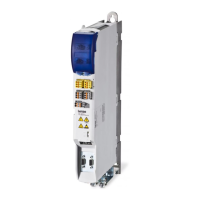Troubleshooting and fault elimination
10.2 Fault analysis with the history buffer
10-5
L
EDSVS9332S-E EN 3.0
Fault recognition and reaction c
z Contains the fault recognition for each memory location and the reaction to the fault.
–e.g.”OH3TRIP”
– For a fieldbus, the fault messages are always represented by an error number. ( 10-6,
column 2)
Note!
z For faults occurring at the same time with different reactions:
– Only the fault with the highest-priority reaction is entered into the history buffer
(priorit y = TRIP → Message → FAIL - QSP → Warning).
z For faults occurring at the same time with the same reaction (e. g. 2 messages):
– Only the fault which occurred first is entered into the history buffer.
Time d
z Contains the times for how long the faults have occurred.
– e. g. ”1234567 s”
– Reference time is the mains switch-on time (see dialog box Diagnosis 93xx, field top right)
Note!
If the fault occurs several times in a row, only the time of the last occurrence is
stored.
Frequency e
z Contains the number which indicates how often the same error has occurred in a row. The
time of the last occurrence is entered into the memory.
Reset fault f
z Click the TRIP reset button to reset the fault.
Clear history buffer g
z This function is only possible when no fault is active.
z Click the History buffer reset button to clear the history buffer.

